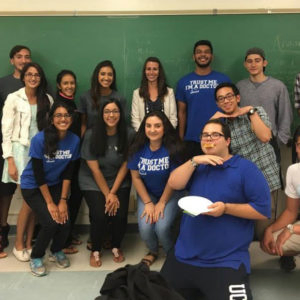Sample MCAT Question - Strecker Synthesis of Amino Acids
What is the correct sequence of steps for Strecker synthesis?
I. Hydrolysis
II. Imine Formation I
II. ɑ-aminonitrile Formation
a) I, II, III
b) II, I, III
c) II, III, I
d) III, II, I
Get 1-on-1 MCAT Tutoring From a Specialist
With MCAT tutoring from MedSchoolCoach, we are committed to help you prepare, excel, and optimize your ideal score on the MCAT exam.
For each student we work with, we learn about their learning style, content knowledge, and goals. We match them with the most suitable tutor and conduct online sessions that make them feel as if they are in the classroom. Each session is recorded, plus with access to whiteboard notes. We focus on high-yield topics if you’re pressed for time. If you have more time or high-score goals, we meticulously cover the entire MCAT syllabus.
Strecker Synthesis of Amino Acids
There are two methods used to synthesize α-amino acids: Strecker synthesis and Gabriel synthesis. This post covers Strecker synthesis.
The Strecker synthesis method uses aldehydes as a starting reactant. The structure of the aldehyde determines the side chain of the synthesized amino acid. The three key steps of the Strecker synthesis are (1) imine formation, (2) α-aminonitrile formation, and (3) hydrolysis. Figure 1 provides an overview of this process.

Strecker Synthesis Step 1: Imine Formation
Step 1 of Strecker synthesis begins when weakly acidic ammonium protonates the aldehyde’s carbonyl .Delving into the details of this mechanism reveals to us that step 1 proceeds through protonation of the oxygen of the aldehyde’s carbonyl oxygen. This full positive charge attached to oxygen makes the carbonyl carbon an excellent electrophilic center that the remaining, nucleophilic ammonia will attack. This attack and the subsequent dehydration of the original reactant ultimately leads to imine formation.
Strecker Synthesis Step 2: α-Aminonitrile Formation
By observing the structure of imines, you will find that they are structurally similar to carbonyls. In the same way, the imine carbon is also electrophilic because nitrogen is more electronegative than carbon. Therefore, the introduction of a molecule like potassium cyanide (KCN), results in a similar electrophile-nucleophile reaction. In this step of Strecker synthesis, cyanide (CN–) acts as a nucleophile and attacks the imine carbon, resulting in the formation of an α-aminonitrile.

Strecker Synthesis Step 3: Hydrolysis
Remember that hydrolysis is simply breaking apart a compound with water. In the instance of Strecker synthesis, we have an acidic aqueous solution that hydrolyzes our nitrile group, forming a carboxylic acid and, therefore, our amino acid product.

That covers the procedure and mechanism of Strecker amino acid synthesis. Our other MCAT posts cover the Gabriel amino acid synthesis as well as the basic structure and stereochemistry of amino acids.
Explore More
MCAT Masterclass Chapters
Take a closer look at our entire MCAT Masterclass or explore our Biochemistry lessons below.
-
MCAT Biochemistry
Gabriel Synthesis of Amino Acids
View Subject -
MCAT Biochemistry
Peptide Bonds
View Subject -
MCAT Biochemistry
Amino Acid Configuration and Structure
View Subject -
MCAT Biochemistry
Amino Acid Classification
View Subject -
MCAT Biochemistry
Glycolysis Net Reaction
View Subject -
MCAT Biochemistry
Predicting Peptide Charge
View Subject




